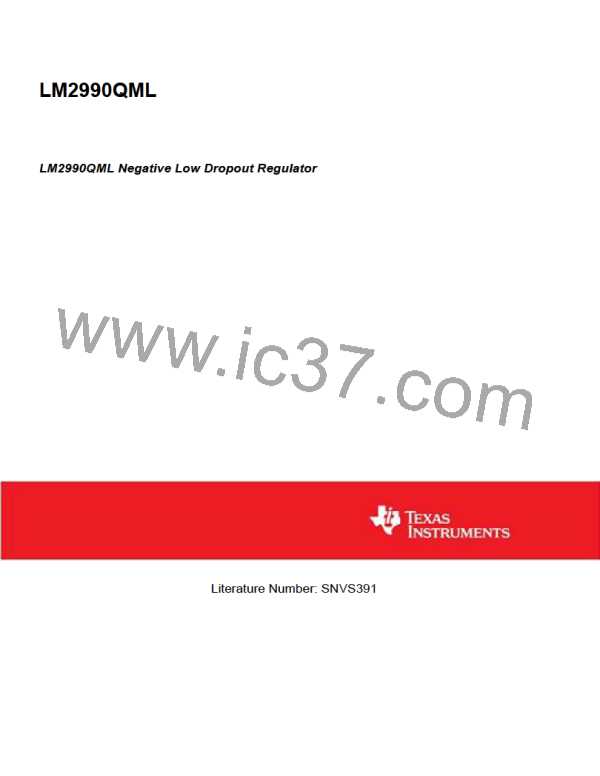Load Regulation: The change in output voltage for a change
in load current at constant chip temperature.
Definition of Terms
Dropout Voltage: The input-output voltage differential at
which the circuit ceases to regulate against further reduction
in input voltage. Measured when the output voltage has
dropped 100 mV from the nominal value obtained at (VO + 5V)
input, dropout voltage is dependent upon load current and
junction temperature.
Long Term Stability: Output voltage stability under acceller-
ated life-test conditions after 1000 hours with maximum rated
voltage and junction temperature.
Output Noise Voltage: The RMS AC voltage at the output,
with constant load and no input ripple, measured over a spec-
ified frequency range.
Input Voltage: The DC voltage applied to the input terminals
with respect to ground.
Quiescent Current: That part of the positive input current
that does not contribute to the positive load current. The reg-
ulator ground lead current.
Input-Output Differential: The voltage difference between
the unregulated input voltage and the regulated output volt-
age for which the regulator will operate.
Ripple Rejection: The ratio of the peak-to-peak input ripple
voltage to the peak-to-peak output ripple voltage.
Line Regulation: The change in output voltage for a change
in the input voltage. The measurement is made under condi-
tions of low dissipation or by using pulse techniques such that
the average chip temperature is not significantly affected.
Temperature Stability of VO: The percentage change in
output voltage for a thermal variation from room temperature
to either temperature extreme.
Typical Performance Characteristics
Dropout Voltage
Normalized Output Voltage
20158614
20158615
LM2990-5.0
Quiescent Current
LM2990-5.0
Low Voltage Behavior
20158616
20158619
5
www.national.com

 TI [ TEXAS INSTRUMENTS ]
TI [ TEXAS INSTRUMENTS ]